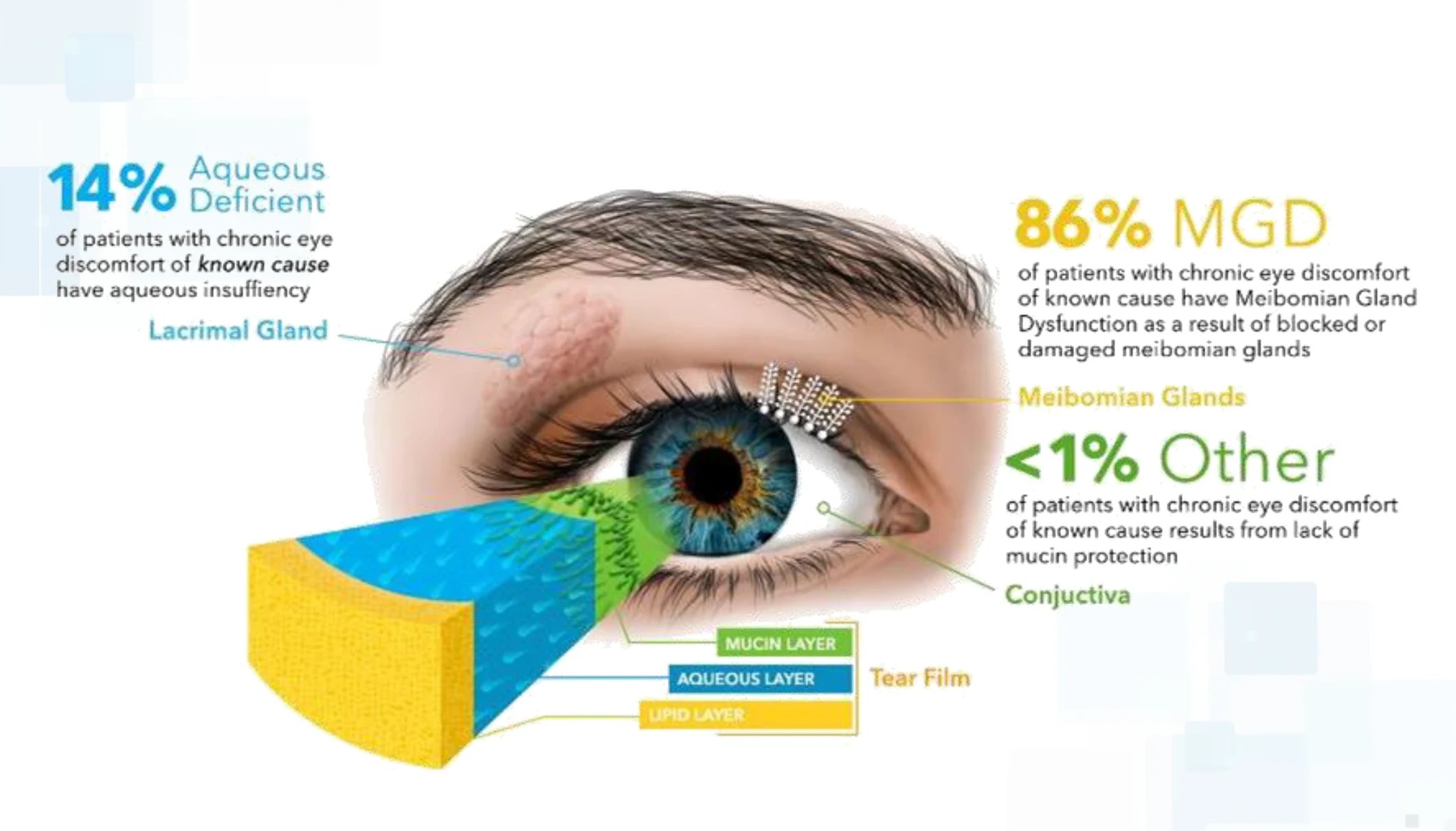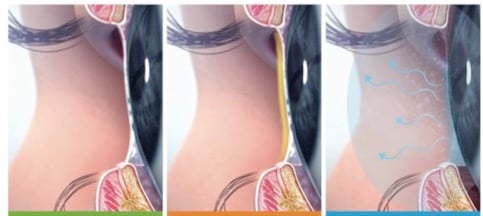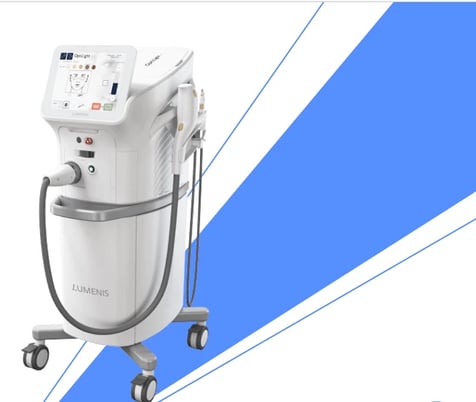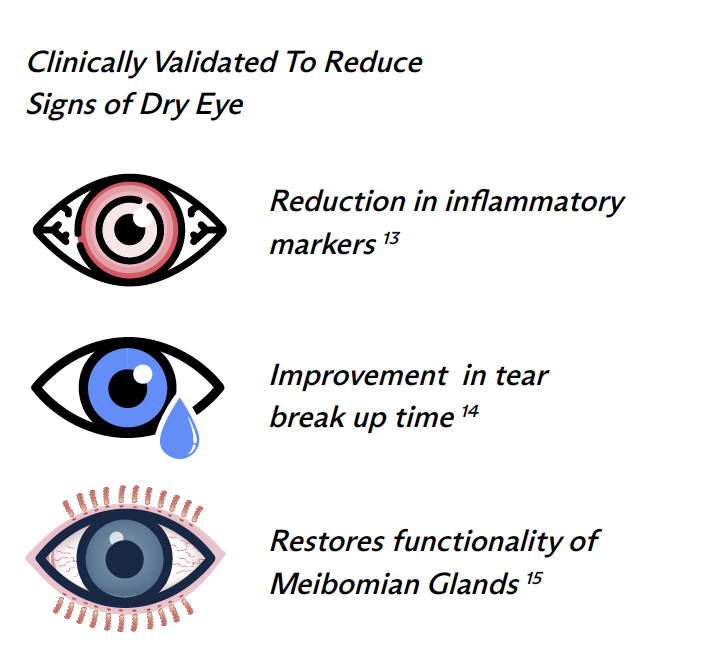Do you experience sensitivity to light, blurred vision, a burning sensation, or discomfort in windy or dry conditions?
Dry Eye is an Incredibly Common Condition
There are just not enough tears
Millions of people suffer from dry eye, a condition that occurs when the eyes do not produce sufficient tears or tears evaporate too quickly. The result is often dry, itchy, stinging, and irritated eyes. A chronic condition, dry eye can worsen over time, and inadequate tears can make daily life frustrating and uncomfortable.
Did you know that watery eyes can be a symptom of Dry Eye?

Have you decreased you participation in or experienced discomfort during outdoor activity, reading, watching TV, or using the computer?
Do you routinely use eye drops for dryness or irritation?
If you answered, “Yes” to any of these questions, contact us to see if you have Dry Eye and what treatment is best for you.
Aqueous vs. Meibomian Gland Dysfunction - MGD
Over 30M Americans suffer from Dry Eye symptoms amounting to 30% of visits to Ophthalmologists.
There are two primary types of dry eye – Aqueous (lacrimal gland) and MGD (Meibomian Gland Dysfunction.) The majority of individuals, close to 90%, experience the form known as MGD. Dr. Lindahl will conduct a comprehensive evaluation of your eyes using a series of tests to examine your tear film, as well as the quantity and quality of the oils produced by your glands. These simple yet informative exams will determine if you have dry eye caused by MGD. If so, the Rochester Eye & Laser Center offers an FDA-approved innovative light therapy dry eye treatment to directly address the underlying cause, in our new Dry Eye Clinic.
Over 30M Americans suffer from Dry Eye symptoms amounting to 30% of visits to Ophthalmologists.

MGD is often a skin gland disease: treating rosacea is essential as it perpetuates the inflammation cycle
 Gerber et al, J Invest Dem Sym Proc 2011
Gerber et al, J Invest Dem Sym Proc 2011
Dry Eye, MGD, Rosacea Treatment-OptiLight
Discover firsthand the remarkable effectiveness of OptiLight for treating Rosacea as shared by one of our patients.
Experience a reduction in inflammatory markers, improved tear break up time, and restored functionality of Meibomian Glands.
Meibomian Gland Dysfunction - MGD
Meibomian Gland Dysfunction, or MGD, occurs when there are blockages or structural damage that inhibits the natural production of protective oils from the meibomian glands located in our eyelids. This oil protects the watery layer in our tear film, but when these oils are not present, it causes your tears to rapidly evaporate and lose their consistency. Without these oils our eyes become more susceptible to the negative effects that dry climates, air conditioning, computer use, reading and other daily activities can have on the long-term health of our eyes.

Protective Water Layer - Produced by the Lacrimal Gland | Water is Protected by Oil - Produced by the Meibomian Glands Located in the EyeLid | Water Evaporating - Redness, Dryness, Irritation, Burning and Eye Fatigue (left to right)
Why is MGD so prevalent?
Extensive computer, smartphone, and tablet use has contributed to a significant increase in partial blinking. Blinking stimulates the meibomian glands to secrete oils and spread a protective oil layer across the tear film. When we partially blink the eyelids do not touch, so there is no pressure applied at the meibomian glands to release these oils. Over time the oils harden in our meibomian glands and blockages develop.
What are the long-term effects of MGD?
When meibomian gland blockages occur, and the glands are left untreated, our glands can shrink, deter orate and disappear entirely. For many patients with MGD, who have left the condition untreated, significant gland loss has occurred and treatment options become limited.
How is MGD Identified?
Both function and structure of the meibomian glands are evaluated to properly assess gland health and identify MGD. To determine function we check to see if the glands are releasing oil and whether partial blinking is contributing to the comfort of your eyes. Structure is observed with gland imaging, where we can see if any structural damage or gland loss has occurred. If there is any damage to your gland structure, it is highly likely MGD is present and your eye discomfort will become progressively worse if left untreated.

NEW DRY EYE CLINIC - OptiLight® Dry Eye Relief
Introducing the first and only light therapy for dry eyes.
OptiLight by Lumenis is a safe, gentle, and effective treatment done to manage dry eye disease. This non-invasive procedure is the first and only FDA-approved intense pulsed light (IPL) treatment for dry eye management.
OptiLight breaks the vicious cycle of inflammation, in four, 30-minute sessions, including prep. with treatment intervals of 2-4 weeks between sessions.
Due to our unique Dry Eye protocol, including OptiLight, we can help you achieve significant, lasting results.

OptiLight uses pulses of light precisely administered in the area below the eyes to reduce dry eye symptoms. This 10-15 minute procedure can relieve dry eye symptoms by:
● Increasing tear break-up time
● Reducing the amount of demodex mites and bacteria around your eyes
● Decreasing inflammation inflammation
● Improving meibomian gland functionality
What to Expect
- Using skin brightening agents or serums for the week before your appointment
- Using tanning beds 1 month prior to your appointment
- Getting botox for at least 3 months before your appointment
- Taking oral isotretinoin, tetracycline, or doxycycline in the 3 months prior to your appointment
The OptiLight Treatment
During this quick and easy treatment, lasting just 10-15 minutes, the doctor will gently apply a refreshing gel to the treatment area and shield your eyes for added protection. As the soothing light touches your skin, you may feel a gentle warmth or a gentle tapping sensation, but rest assured, there should be no pain involved.
Post-Procedure Care
While side effects are uncommon, your eyes may feel slightly more dry or gritty for the day following your procedure. If you do experience dry eyes, you can use preservative-free artificial tears.
Following your treatment, your skin will be sensitive, so we recommend avoiding sun exposure and wearing sunscreen.
Is OptiLight® the Right Treatment for You?
✅ You must be 22 years of age or older with moderate to severe signs and symptoms of Dry Eye Disease due to MGD
✅ For optimal results, you must complete all 4 sessions of treatment
✅ Avoid sun exposure for 3- 4 weeks prior to, and in-between sessions
✅ Usually, you can use makeup immediately after treatment
✅ The day of treatment, avoid hot water cleanse your skin gently with tepid water, and hydrate the treated area with a suitable moisturizer, Aloe Vera gel, or anti-burn cream
✅ Treated area should not be rubbed, scratch or picked
✅ Apply sunblock protection (provided at treatment) on the treated area, daily for one month after the treatment session.
Am I a Good Candidate for OptiLight by Lumenis?
How do you know if OptiLight is the right treatment for you? During an eye exam, your doctor can determine whether or not it is the right option for you. In general, OptiLight isn’t recommended for patients who:
-
Are taking certain medications, like Accutane
-
Have active acne
-
Suffer from certain skin disorders
-
Are susceptible to keloid scarring (ropy, thick scars)
-
Have severe scarring
-
Have severely sunburned recently
LipiFlow
Contact us to determine if you have Dry Eye and see if LipiFlow is the right treatment for you.
Treating Dry Eye and MGD with LipiFlow
Gland blockages can be removed and gland function can be restored with LipiFlow. Through advanced in the application of vectored thermal pulsation (VTP) technology, the LipiFlow treatment is administered with no pain, right in our office.

The Procedure
Individually sealed devices called activators are placed around the eyelids. a gentle "messaging" coupled with the precise delivery of heat is applied removing gland blockages and reactivating gland function. The treatment is designed so the eyeball is protected.
DryEye Rescue
Rochester Eye and Laser Center now offer DryEye Rescue for all your dry eye shopping needs. Shop online from over 200, Doctor Approved Dry Eye Products and get 10% off and free shipping!
Rochester Eye and Laser Center is recognized as a Dry Eye Center of Excellence
"So many people experience unnecessary discomfort with dry eye. It may start with mild symptoms that are easy to ignore. But the condition usually worsens over time and impacts daily life. There’s a simple, painless solution to regain eye health and comfort -- Come in and see us for an evaluation and learn more about treating your dry eyes in our Dry Eye Clinic with OptiLight® treatments. I use OptiLight® treatments myself for my dry eyes.”

Kenneth Lindahl, MD
To contact our office, call 585-232-2560.
For appointments ext. 0










